Silver Screen Sundays, Chapter 4: Diamonds Are a Girl's Best Friend, The Moon of Baroda and Hollywood's Most Famous Necklace
Marilyn Monroe's legendary diamond necklace scene that changed Hollywood forever
Welcome back to Silver Screen Sundays! After diving into Audrey's timeless pearls last week, I couldn't resist spotlighting another jewelry moment that literally stopped the world, Marilyn Monroe dripping in diamonds while belting out "Diamonds Are a Girl's Best Friend." But here's what blew my mind when I started researching this piece: that stunning necklace wasn't just movie magic. It was the Moon of Baroda, a 24.04-carat fancy yellow diamond with a story more dramatic than any Hollywood script.
Are you ready for a tale that spans 500 years, crosses oceans (despite an ancient curse!), and transforms a royal Indian treasure into cinema's most iconic piece? Grab your coffee, this one's a wild ride.
From Ancient India to American Dreams
Picture this: sometime between the 15th and 17th centuries, deep in the legendary Golconda mines of India, miners discovered what would become one of history's most famous diamonds. The Moon of Baroda started life as a 25.95-carat rough stone, but here's where the craftsmanship gets incredible, ancient cutters managed to shape it into that gorgeous antique pear cut while losing barely any weight. The final gem? A breathtaking 24.04 carats of pure sunshine yellow.
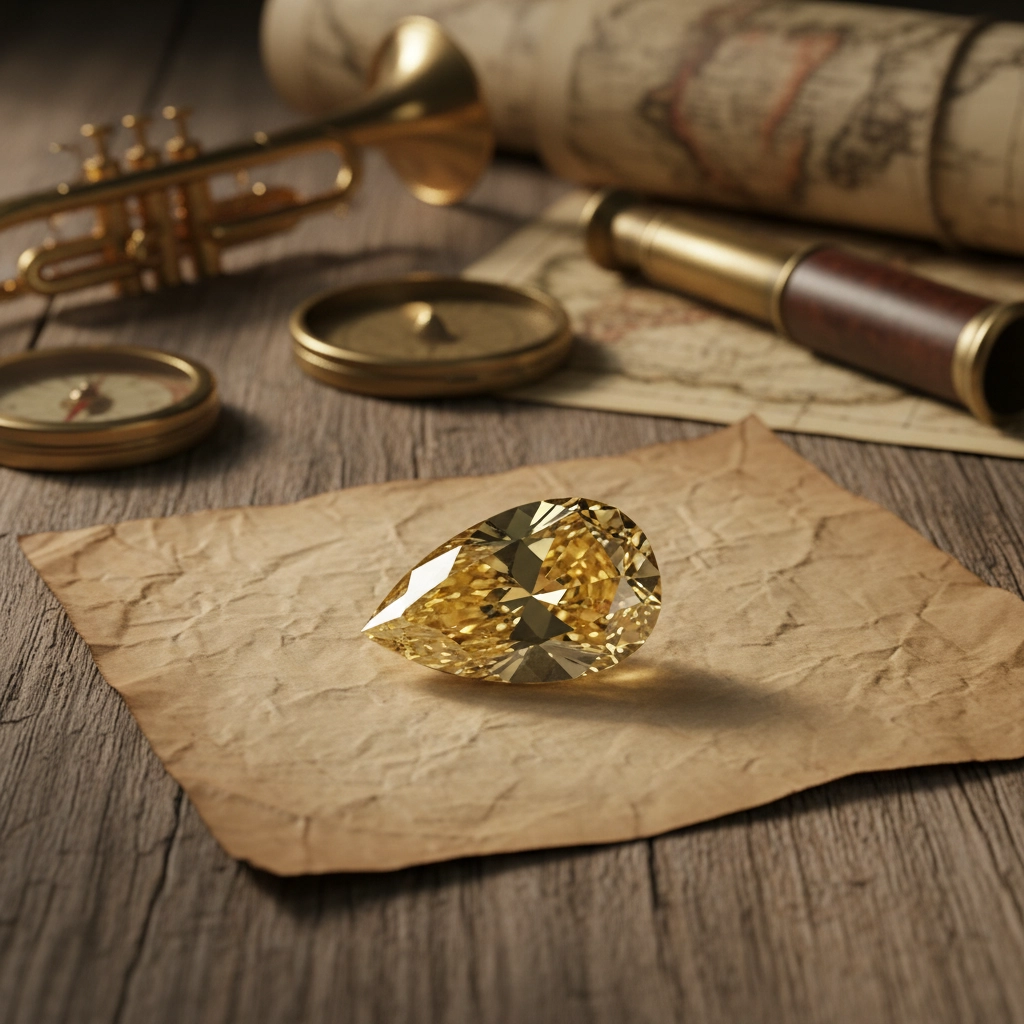
The mesmerizing fancy yellow hue that made the Moon of Baroda instantly recognizable
For nearly five centuries, this beauty lived in the treasury of the Gaekwad dynasty, the maharajas who ruled western India from their palace in Baroda (now Gujarat). Can you imagine walking into that royal vault? The Moon of Baroda sat alongside treasures that made it the second-richest collection in all of India, right after the Nizam of Hyderabad's legendary hoard.
But wait, there's a plot twist worthy of any Hollywood thriller.
The European Chapter (And That Pesky Curse)
In the mid-1700s, the Gaekwad family made an extraordinary gesture. They gifted their precious Moon of Baroda to Empress Marie Thérèse of Austria, yes, Marie Antoinette's mother and the only woman to rule the mighty Habsburg Dynasty. Talk about diplomatic jewelry!
Here's where things get spooky, though. The diamond comes with its own curse: legend says that if the gem ever crosses a sea or ocean, it brings terrible luck to whoever owns it. And wouldn't you know it? Poor Empress Marie Thérèse died unexpectedly, and the Habsburgs practically threw the diamond back to India, convinced it was cursed.
The Moon of Baroda returned to the Gaekwad treasury, where it stayed safely landlocked... until the 1940s.
Hollywood Calls (Curse Be Damned!)
By the 1940s, someone decided to test that ocean-crossing curse theory. The Moon of Baroda made its way to America, landing with diamond cutters in Cleveland, Ohio. In 1953, Meyer Rosenbaum, president of Detroit's Meyer Jewelry Company, acquired the stone. That same year: pure coincidence or destiny?: 20th Century Fox needed the most spectacular diamond necklace ever for their new Marilyn Monroe picture.
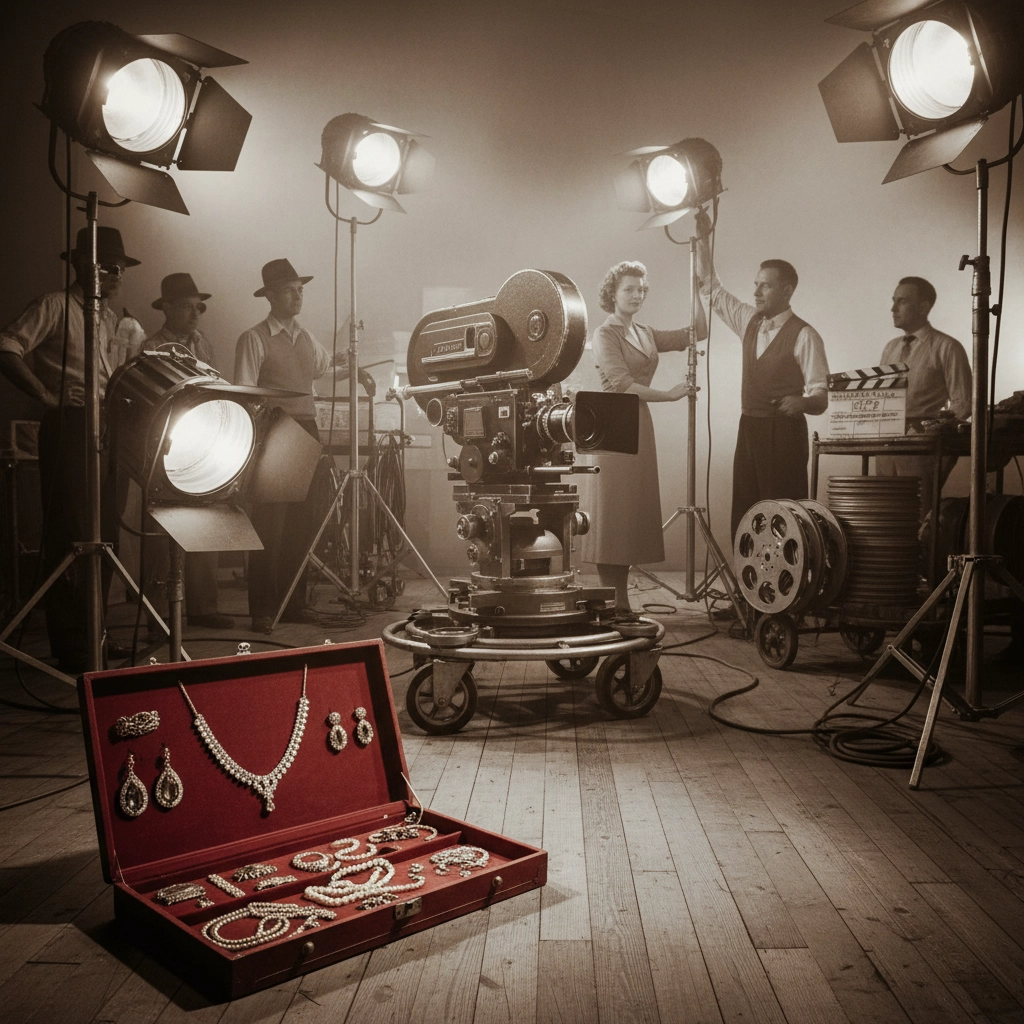
Behind-the-scenes magic: creating Hollywood's most unforgettable jewelry moment
And that's how a 500-year-old Indian royal treasure became the star of "Gentlemen Prefer Blondes."
The Scene That Changed Everything
Let's talk about that legendary performance. When Marilyn Monroe stepped onto that set wearing the Moon of Baroda, she wasn't just wearing a necklace: she was carrying centuries of history around her neck. The diamond was the largest necklace Monroe ever wore on film, and boy, did it make an impact.
The "Diamonds Are a Girl's Best Friend" sequence became instantly iconic. Monroe, surrounded by a sea of men in tuxedos, channeling pure glamour while that magnificent yellow diamond caught every studio light. The scene was so powerful it literally transformed how America thought about diamonds. Before Marilyn, diamonds were formal and stuffy. After her? They became symbols of romance, glamour, and that indefinable Hollywood magic.
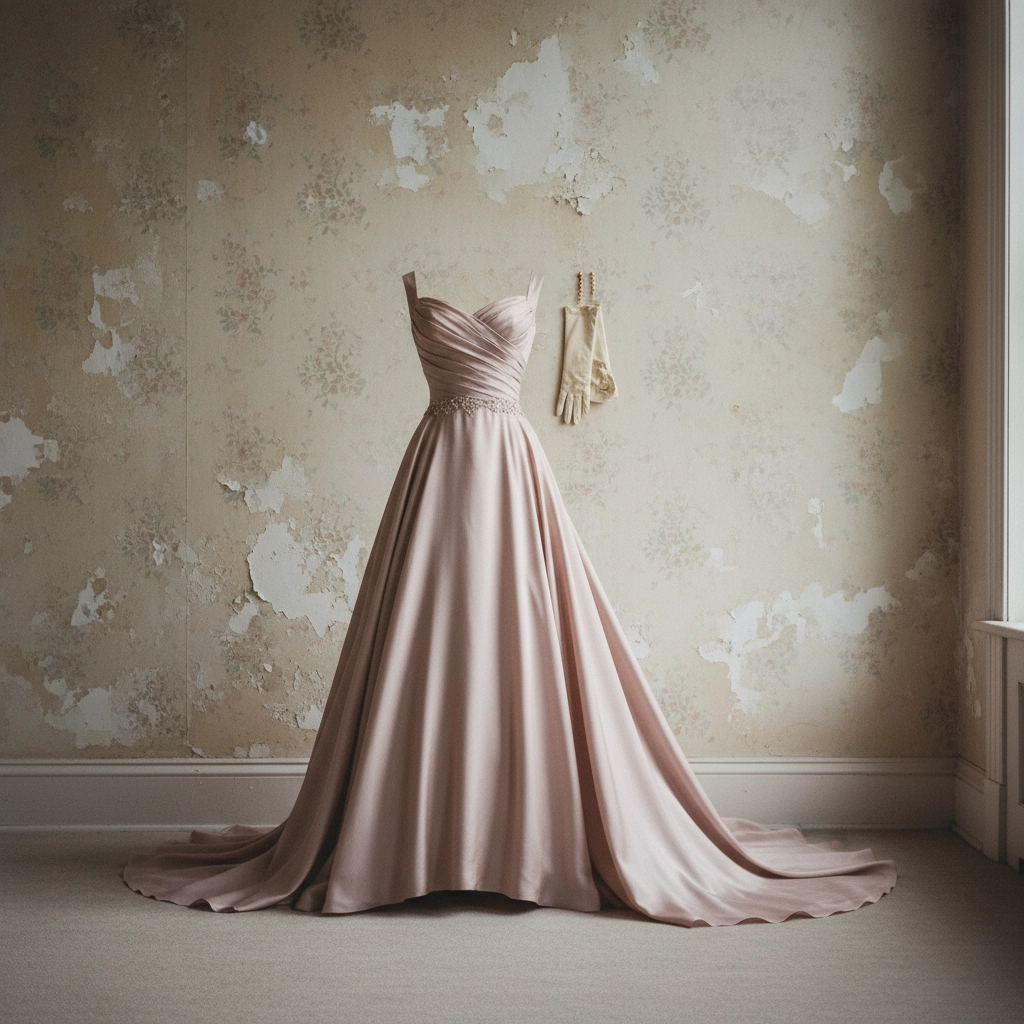
The iconic pink gown and diamond combination that defined 1950s glamour
Think about it: how many jewelry moments can you remember from movies of that era? Yet here we are, over 70 years later, and that image of Marilyn in diamonds is still instantly recognizable. The scene became so culturally significant that it influenced everything from Madonna's "Material Girl" video to countless fashion editorials.
The Real Movie Magic Behind the Scenes
Here's what fascinates me about this whole story: the movie industry in 1953 was taking a massive risk using a genuine historical artifact like the Moon of Baroda. This wasn't some studio-made prop: this was a real diamond worth more than most people's houses, with royal provenance and centuries of stories.
The insurance alone must have been astronomical! Can you imagine being the person responsible for keeping track of a 500-year-old cursed diamond on a Hollywood set? The logistics, the security, the sheer audacity of it all.
But that decision to use the real thing instead of a fake? Pure genius. There's something about authentic diamonds that cameras just pick up. That inner fire, that way light dances through real crystal: you can't fake that magic, no matter how good your props department is.
From Royal Vaults to Modern Auctions
Fast forward to recent years, and the Moon of Baroda proved its lasting appeal when it hit the auction block. The necklace sold for an incredible $1.3 million: way above the estimated $750,000 value. Why? Because this wasn't just a diamond anymore. It was a piece of American culture, Hollywood history, and royal heritage all wrapped into one glorious yellow stone.
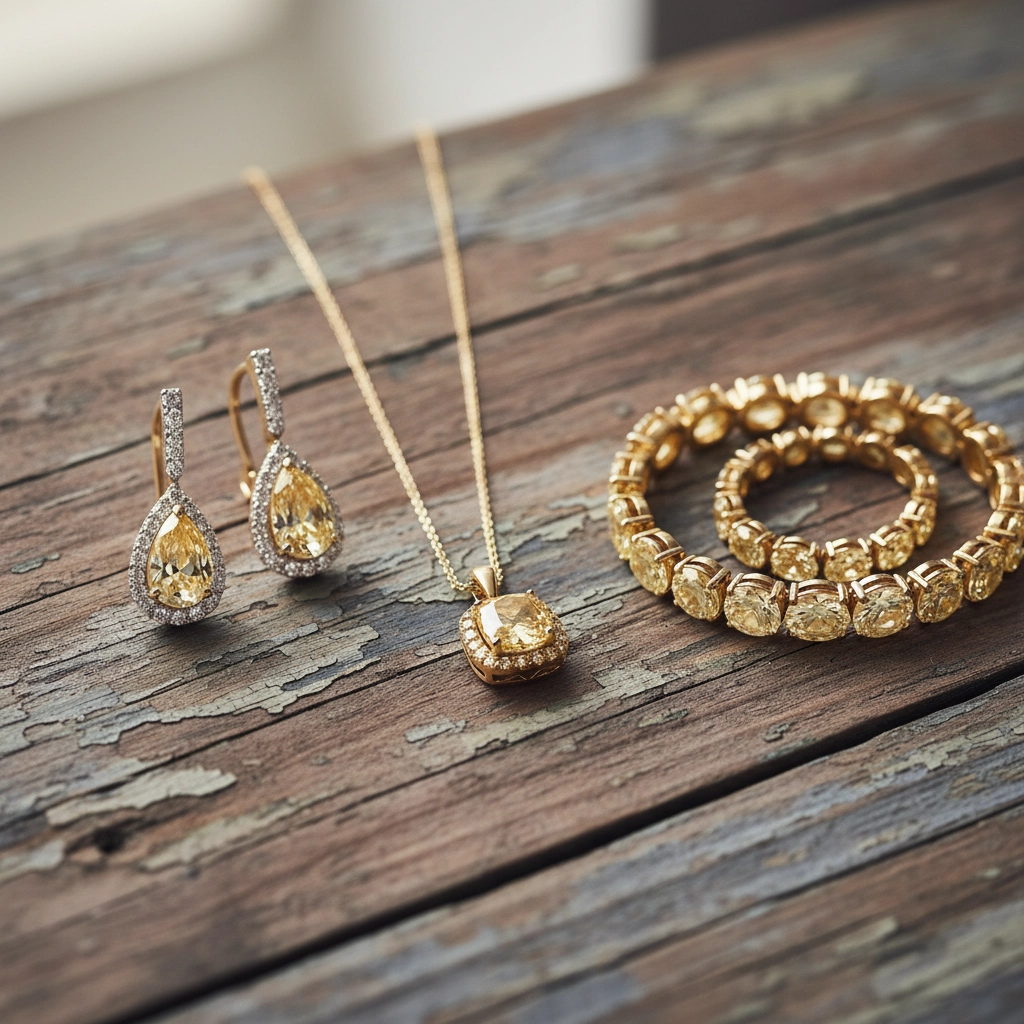
The timeless appeal of yellow diamonds in modern jewelry settings
That auction result tells us something beautiful: people still connect with authentic stories. In our world of mass-produced everything, there's something magical about an object that carries real history, real glamour, real meaning.
Channeling Marilyn: Yellow Diamond Style Today
So what can we learn from Marilyn's iconic look? First off, yellow diamonds are absolutely having a moment again. There's something about that warm, sunny glow that feels both vintage and completely contemporary. Have you noticed how yellow gold is making such a comeback? It's that same principle: warmth over cool, richness over starkness.
The key to channeling Marilyn's diamond glamour isn't about size (though the Moon of Baroda certainly had that covered!). It's about confidence. Monroe wore that massive necklace like it belonged on her, like she was born to wear diamonds. Whether you're choosing a delicate yellow diamond pendant or statement diamond earrings, that attitude is what makes the magic happen.
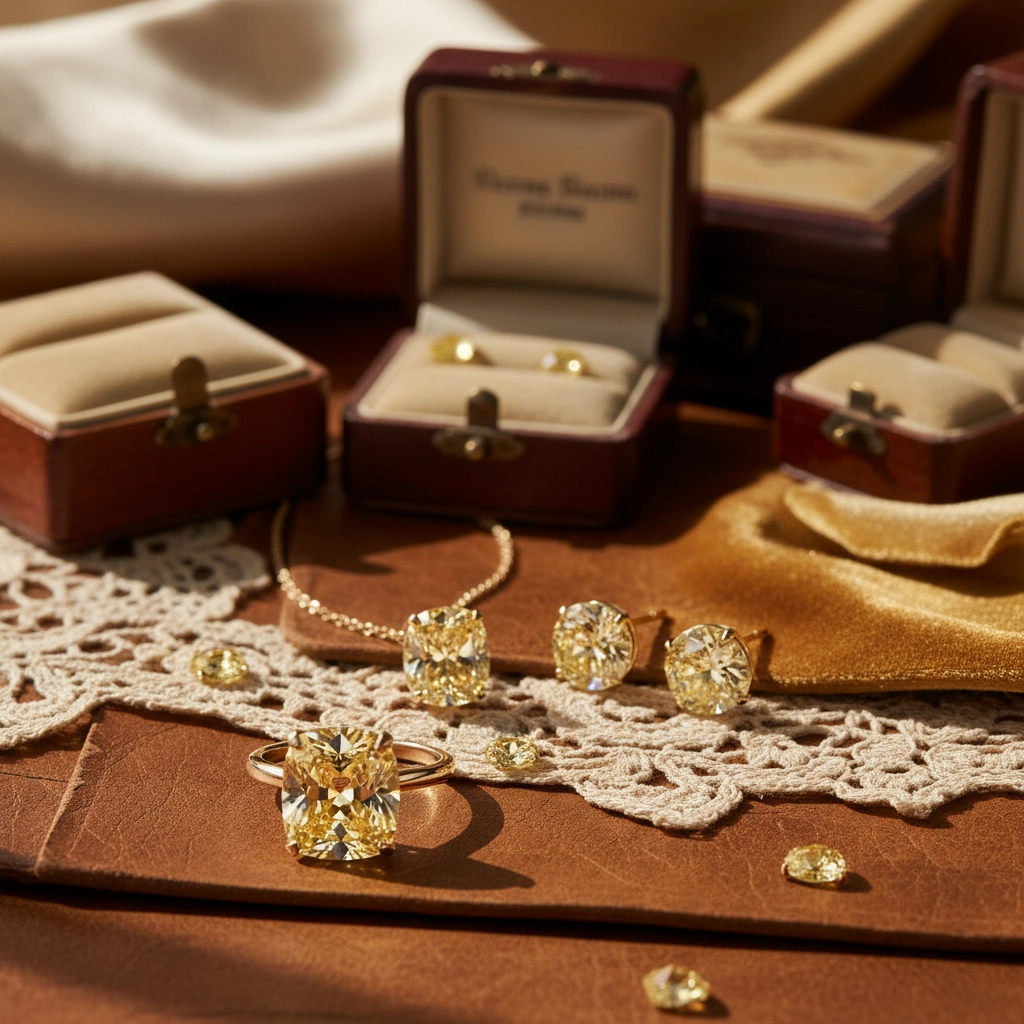
Modern yellow diamond jewelry pieces inspired by Hollywood glamour
And here's a styling secret from that famous scene: Marilyn paired the elaborate necklace with relatively simple earrings and that gorgeous pink gown. The lesson? Let one spectacular piece be the star, then build everything else around supporting that moment.
The Curse That Became a Blessing
Isn't it funny how that supposed curse turned out? The Moon of Baroda crossed the ocean and brought not bad luck, but incredible fame and cultural immortality. Maybe the real magic wasn't in avoiding the curse: maybe it was in embracing the journey, no matter where it led.
That diamond traveled from ancient India to European courts to American jewelry stores to Hollywood soundstages to modern auction houses. Each stop added another layer to its story, another reason why it captivates us.
When I look at iconic jewelry moments like this one, I'm reminded why I fell in love with this business in the first place. It's never really just about the stones or the settings: it's about the stories, the memories, the way a single piece can carry so much history and meaning.
What's the most memorable piece of jewelry you've ever worn or seen? I bet there's a story there, just like the Moon of Baroda's incredible journey from royal treasure to Hollywood legend.
Next Sunday, we're diving into another cinema classic that'll make you see gemstones in a whole new light. Until then, keep sparkling!
Cheers,
Peter